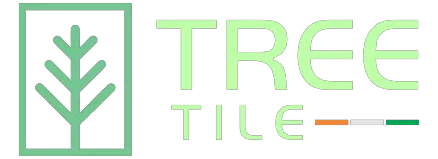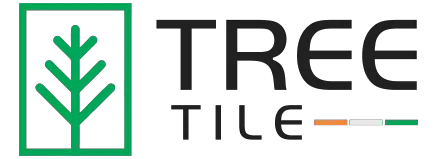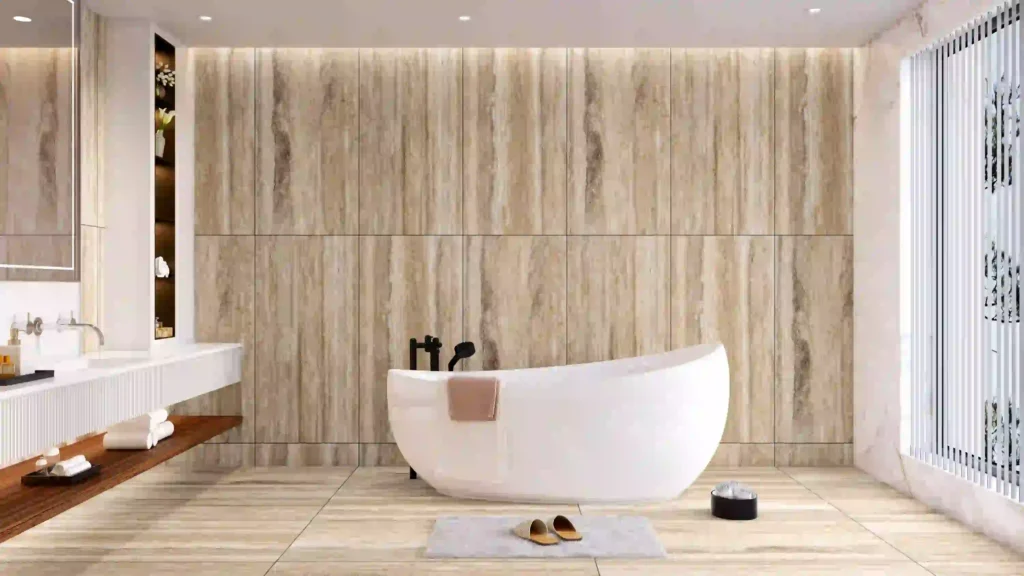Introduction
In the energetic world of tile fabricating, the choice between pressure driven and multi-axis squeezing advances plays a pivotal part in characterizing effectiveness, exactness, and the quality of conclusion items. Both strategies speak to critical headways in the industry, each advertising unmistakable focal points custom fitted to diverse fabricating needs and plan requirements.
Understanding Pressure driven Squeezing Technology
Hydraulic squeezing innovation has long been a foundation in mechanical fabricating forms, counting tile generation. This strategy utilizes pressure driven weight to compress crude materials, ordinarily ceramic powders, into exact moulds. The handle starts with the planning of ceramic blends, which are at that point bolstered into moods and subjected to strongly weight from water powered cylinders.
One of the key preferences of pressure driven squeezing lies in its capacity to apply gigantic drive consistently over huge moulds, guaranteeing reliable thickness and basic keenness in the tiles. This uniform weight dissemination minimizes varieties in tile thickness and upgrades generally item quality. In addition, water powered presses are eminent for their unwavering quality and strength, making them appropriate for high-volume generation situations where consistency and effectiveness are paramount.
However, pressure driven squeezing does have impediments, especially in its versatility to complex plans and complex designs. The molds utilized in pressure driven presses are ordinarily inactive and require manual alteration for plan changes, which can be time-consuming and labor-intensive. As a result, whereas water powered squeezing exceeds expectations in creating standard tiles effectively, it may confront challenges in assembly the requests of custom plans and inventive shapes.
Exploring Multi-Axis Squeezing Techniques
In differentiate, multi-axis squeezing speaks to a more later advancement that addresses the require for adaptability and customization in tile fabricating. This progressed procedure utilizes computer-controlled tomahawks to control molds along different measurements amid the squeezing prepare. By powerfully altering the position and introduction of molds, multi-axis presses can accomplish complicated plans and complex geometries that were already challenging with conventional water powered methods.
The key advantage of multi-axis squeezing lies in its capacity to deliver tiles with changed surfaces, profundities, and shapes without compromising on quality or effectiveness. This innovation permits producers to make bespoke plans that cater to advancing buyer inclinations for one of a kind and personalized tile establishment. By joining CAD/CAM program with exactness apparatus, multi-axis presses enable originators to thrust the boundaries of inventiveness whereas keeping up tight resilience and tall generation speeds.
Moreover, multi-axis squeezing frameworks offer more prominent adaptability in shape plan and adjustment. Not at all like water powered presses, which depend on settled moulds, multi-axis frameworks can quickly reconfigure moulds for distinctive designs and sizes. This flexibility not as it were improving generation productivity but too diminishes setup times and fabric wastage related with conventional fabricating processes.
Choosing the Right Innovation for Your Needs
When selecting between water powered and multi-axis squeezing advances, producers must consider a few variables, counting generation volume, plan complexity, and cost-effectiveness. Pressure driven squeezing remains a strong choice for large-scale generation runs of standard tiles where consistency and unwavering quality are vital. Its capacity to provide uniform weight and tall yield rates makes it perfect for assembly advertise requests efficiently.
Conversely, multi-axis squeezing offers unparalleled flexibility and customization capabilities, making it reasonable for specialty markets and high-end tile plans that require complex designs and finished surfaces. Whereas introductory speculations may be higher compared to pressure driven frameworks, the capacity to improve and separate items can give a competitive edge in the market.
Conclusion
In conclusion, both water powered and multi-axis squeezing innovations have changed the scene of tile fabricating by advertising particular points of interest custom fitted to diverse generation needs. Whether optimizing for proficiency in mass generation or investigating imaginative conceivable outcomes in plan advancement, the choice between these advances eventually depends on adjusting specialized capabilities with commerce destinations. By understanding their individual qualities and applications, producers can make educated choices that drive proficiency, improve item quality, and meet advancing shopper requests in the energetic world of tile manufacturing.
This comprehensive investigation highlights how each innovation contributes to the proficiency and quality of tile fabricating, enabling producers to make educated choices based on their particular generation prerequisites and showcase methodologies.
porcelain slab Tiles exporters | porcelain slab Tiles traders | porcelain slab Tiles suppliers | porcelain slab Tiles manufacturers | porcelain slab Tiles distributors | Ceramic porcelain slab Tiles exports | Porcelain porcelain slab Tiles exports | Stone porcelain slab Tiles exports | Marble porcelain slab Tiles exports | Granite porcelain slab Tiles exports | Travertine porcelain slab Tiles exports | Mosaic porcelain slab Tiles exports | Glass porcelain slab Tiles exports | Wall porcelain slab Tiles exports | Floor porcelain slab Tiles exports | Roof porcelain slab Tiles exports | Terracotta porcelain slab Tiles exports | Terrazzo porcelain slab Tiles exports | Encaustic porcelain slab Tiles exports | Cement porcelain slab Tiles exports | Quarry porcelain slab Tiles exports | Slate porcelain slab Tiles exports | Limestone porcelain slab Tiles exports | Wood porcelain slab Tiles exports | Metal porcelain slab Tiles exports | Vinyl porcelain slab Tiles exports | Laminate porcelain slab Tiles exports | Rubber porcelain slab Tiles exports | Terracotta porcelain slab Tiles exporters | Terrazzo porcelain slab Tiles exporters | Encaustic porcelain slab Tiles exporters | Cement porcelain slab Tiles exporters | Quarry porcelain slab Tiles exporters | Slate porcelain slab Tiles exporters | Limestone porcelain slab Tiles exporters | Wood porcelain slab Tiles exporters | Metal porcelain slab Tiles exporters | Vinyl porcelain slab Tiles exporters | Laminate porcelain slab Tiles exporters | Rubber porcelain slab Tiles exporters | Ceramic porcelain slab Tiles traders | Porcelain porcelain slab Tiles traders | Stone porcelain slab Tiles traders | Marble porcelain slab Tiles traders | Granite porcelain slab Tiles traders | Travertine porcelain slab Tiles traders | Mosaic porcelain slab Tiles traders | Glass porcelain slab Tiles traders | Wall porcelain slab Tiles traders | Floor porcelain slab Tiles traders | Roof porcelain slab Tiles traders | Terracotta porcelain slab Tiles traders | Terrazzo porcelain slab Tiles traders | Encaustic porcelain slab Tiles traders | Cement porcelain slab Tiles traders | Quarry porcelain slab Tiles traders | Slate porcelain slab Tiles traders | Limestone porcelain slab Tiles traders | Wood porcelain slab Tiles traders | Metal porcelain slab Tiles traders | Vinyl porcelain slab Tiles traders | Laminate porcelain slab Tiles traders | Rubber porcelain slab Tiles traders | Ceramic porcelain slab Tiles suppliers | Porcelain porcelain slab Tiles suppliers | Stone porcelain slab Tiles suppliers | Marble porcelain slab Tiles suppliers | Granite porcelain slab Tiles suppliers | Travertine porcelain slab Tiles suppliers | Mosaic porcelain slab Tiles suppliers | Glass porcelain slab Tiles suppliers | Wall porcelain slab Tiles suppliers | Floor porcelain slab Tiles suppliers | Roof porcelain slab Tiles suppliers | Terracotta porcelain slab Tiles suppliers | Terrazzo porcelain slab Tiles suppliers | Encaustic porcelain slab Tiles suppliers | Cement porcelain slab Tiles suppliers | Quarry porcelain slab Tiles suppliers | Slate porcelain slab Tiles suppliers | Limestone porcelain slab Tiles suppliers | Wood porcelain slab Tiles suppliers | Metal porcelain slab Tiles suppliers | Vinyl porcelain slab Tiles suppliers | Laminate porcelain slab Tiles suppliers | Rubber porcelain slab Tiles suppliers | Ceramic porcelain slab Tiles manufacturers | Porcelain porcelain slab Tiles manufacturers | Stone porcelain slab Tiles manufacturers | Marble porcelain slab Tiles manufacturers | Granite porcelain slab Tiles manufacturers | Travertine porcelain slab Tiles manufacturers | Mosaic porcelain slab Tiles manufacturers | Glass porcelain slab Tiles manufacturers | Wall porcelain slab Tiles manufacturers | Floor porcelain slab Tiles manufacturers | Roof porcelain slab Tiles manufacturers | Terracotta porcelain slab Tiles manufacturers | Terrazzo porcelain slab Tiles manufacturers | Encaustic porcelain slab Tiles manufacturers | Cement porcelain slab Tiles manufacturers | Quarry porcelain slab Tiles manufacturers | Slate porcelain slab Tiles manufacturers | Limestone porcelain slab Tiles manufacturers | Wood porcelain slab Tiles manufacturers | Metal porcelain slab Tiles manufacturers | Vinyl porcelain slab Tiles manufacturers | Laminate porcelain slab Tiles manufacturers | Rubber porcelain slab Tiles manufacturers | Ceramic porcelain slab Tiles distributors | Porcelain porcelain slab Tiles distributors | Stone porcelain slab Tiles distributors | Marble porcelain slab Tiles distributors | Granite porcelain slab Tiles distributors | Travertine porcelain slab Tiles distributors | Mosaic porcelain slab Tiles distributors | Glass porcelain slab Tiles distributors | Wall porcelain slab Tiles distributors | Floor porcelain slab Tiles distributors | Roof porcelain slab Tiles distributors | Terracotta porcelain slab Tiles distributors | Terrazzo porcelain slab Tiles distributors | Encaustic porcelain slab Tiles distributors | Cement porcelain slab Tiles distributors | Quarry porcelain slab Tiles distributors | Slate porcelain slab Tiles distributors | Limestone porcelain slab Tiles distributors | Wood porcelain slab Tiles distributors | Metal porcelain slab Tiles distributors | Vinyl porcelain slab Tiles distributors | Laminate porcelain slab Tiles distributors | Rubber porcelain slab Tiles distributors | pgvt Tiles exporters | pgvt Tiles traders | pgvt Tiles suppliers | pgvt Tiles manufacturers | pgvt Tiles distributors | Ceramic pgvt Tiles exports | Porcelain pgvt Tiles exports | Stone pgvt Tiles exports | Marble pgvt Tiles exports | Granite pgvt Tiles exports | Travertine pgvt Tiles exports | Mosaic pgvt Tiles exports | Glass pgvt Tiles exports | Wall pgvt Tiles exports | Floor pgvt Tiles exports | Roof pgvt Tiles exports | Terracotta pgvt Tiles exports | Terrazzo pgvt Tiles exports | Encaustic pgvt Tiles exports | Cement pgvt Tiles exports | Quarry pgvt Tiles exports | Slate pgvt Tiles exports | Limestone pgvt Tiles exports | Wood pgvt Tiles exports | Metal pgvt Tiles exports | Vinyl pgvt Tiles exports | Laminate pgvt Tiles exports | Rubber pgvt Tiles exports | Terracotta pgvt Tiles exporters | Terrazzo pgvt Tiles exporters | Encaustic pgvt Tiles exporters | Cement pgvt Tiles exporters | Quarry pgvt Tiles exporters | Slate pgvt Tiles exporters | Limestone pgvt Tiles exporters | Wood pgvt Tiles exporters | Metal pgvt Tiles exporters | Vinyl pgvt Tiles exporters | Laminate pgvt Tiles exporters | Rubber pgvt Tiles exporters | Ceramic pgvt Tiles traders | Porcelain pgvt Tiles traders | Stone pgvt Tiles traders | Marble pgvt Tiles traders | Granite pgvt Tiles traders | Travertine pgvt Tiles traders | Mosaic pgvt Tiles traders | Glass pgvt Tiles traders | Wall pgvt Tiles traders | Floor pgvt Tiles traders | Roof pgvt Tiles traders | Terracotta pgvt Tiles traders | Terrazzo pgvt Tiles traders | Encaustic pgvt Tiles traders | Cement pgvt Tiles traders | Quarry pgvt Tiles traders | Slate pgvt Tiles traders | Limestone pgvt Tiles traders | Wood pgvt Tiles traders | Metal pgvt Tiles traders | Vinyl pgvt Tiles traders | Laminate pgvt Tiles traders | Rubber pgvt Tiles traders | Ceramic pgvt Tiles suppliers | Porcelain pgvt Tiles suppliers | Stone pgvt Tiles suppliers | Marble pgvt Tiles suppliers | Granite pgvt Tiles suppliers | Travertine pgvt Tiles suppliers | Mosaic pgvt Tiles suppliers | Glass pgvt Tiles suppliers | Wall pgvt Tiles suppliers | Floor pgvt Tiles suppliers | Roof pgvt Tiles suppliers | Terracotta pgvt Tiles suppliers | Terrazzo pgvt Tiles suppliers | Encaustic pgvt Tiles suppliers | Cement pgvt Tiles suppliers | Quarry pgvt Tiles suppliers | Slate pgvt Tiles suppliers | Limestone pgvt Tiles suppliers | Wood pgvt Tiles suppliers | Metal pgvt Tiles suppliers | Vinyl pgvt Tiles suppliers | Laminate pgvt Tiles suppliers | Rubber pgvt Tiles suppliers | Ceramic pgvt Tiles manufacturers | Porcelain pgvt Tiles manufacturers | Stone pgvt Tiles manufacturers | Marble pgvt Tiles manufacturers | Granite pgvt Tiles manufacturers | Travertine pgvt Tiles manufacturers | Mosaic pgvt Tiles manufacturers | Glass pgvt Tiles manufacturers | Wall pgvt Tiles manufacturers | Floor pgvt Tiles manufacturers | Roof pgvt Tiles manufacturers | Terracotta pgvt Tiles manufacturers | Terrazzo pgvt Tiles manufacturers | Encaustic pgvt Tiles manufacturers | Cement pgvt Tiles manufacturers | Quarry pgvt Tiles manufacturers | Slate pgvt Tiles manufacturers | Limestone pgvt Tiles manufacturers | Wood pgvt Tiles manufacturers | Metal pgvt Tiles manufacturers | Vinyl pgvt Tiles manufacturers | Laminate pgvt Tiles manufacturers | Rubber pgvt Tiles manufacturers | Ceramic pgvt Tiles distributors | Porcelain pgvt Tiles distributors | Stone pgvt Tiles distributors | Marble pgvt Tiles distributors | Granite pgvt Tiles distributors | Travertine pgvt Tiles distributors | Mosaic pgvt Tiles distributors | Glass pgvt Tiles distributors | Wall pgvt Tiles distributors | Floor pgvt Tiles distributors | Roof pgvt Tiles distributors | Terracotta pgvt Tiles distributors | Terrazzo pgvt Tiles distributors | Encaustic pgvt Tiles distributors | Cement pgvt Tiles distributors | Quarry pgvt Tiles distributors | Slate pgvt Tiles distributors | Limestone pgvt Tiles distributors | Wood pgvt Tiles distributors | Metal pgvt Tiles distributors | Vinyl pgvt Tiles distributors | Laminate pgvt Tiles distributors | Rubber pgvt Tiles distributors | porcelain slab Tiles exporters | porcelain slab Tiles traders | porcelain slab Tiles suppliers | porcelain slab Tiles manufacturers | porcelain slab Tiles distributors | Ceramic porcelain slab Tiles exports | Porcelain porcelain slab Tiles exports | Stone porcelain slab Tiles exports | Marble porcelain slab Tiles exports | Granite porcelain slab Tiles exports | Travertine porcelain slab Tiles exports | Mosaic porcelain slab Tiles exports | Glass porcelain slab Tiles exports | Wall porcelain slab Tiles exports | Floor porcelain slab Tiles exports | Roof porcelain slab Tiles exports | Terracotta porcelain slab Tiles exports | Terrazzo porcelain slab Tiles exports | Encaustic porcelain slab Tiles exports | Cement porcelain slab Tiles exports | Quarry porcelain slab Tiles exports | Slate porcelain slab Tiles exports | Limestone porcelain slab Tiles exports | Wood porcelain slab Tiles exports | Metal porcelain slab Tiles exports | Vinyl porcelain slab Tiles exports | Laminate porcelain slab Tiles exports | Rubber porcelain slab Tiles exports | Terracotta porcelain slab Tiles exporters | Terrazzo porcelain slab Tiles exporters | Encaustic porcelain slab Tiles exporters | Cement porcelain slab Tiles exporters | Quarry porcelain slab Tiles exporters | Slate porcelain slab Tiles exporters | Limestone porcelain slab Tiles exporters | Wood porcelain slab Tiles exporters | Metal porcelain slab Tiles exporters | Vinyl porcelain slab Tiles exporters | Laminate porcelain slab Tiles exporters | Rubber porcelain slab Tiles exporters | Ceramic porcelain slab Tiles traders | Porcelain porcelain slab Tiles traders | Stone porcelain slab Tiles traders | Marble porcelain slab Tiles traders | Granite porcelain slab Tiles traders | Travertine porcelain slab Tiles traders | Mosaic porcelain slab Tiles traders | Glass porcelain slab Tiles traders | Wall porcelain slab Tiles traders | Floor porcelain slab Tiles traders | Roof porcelain slab Tiles traders | Terracotta porcelain slab Tiles traders | Terrazzo porcelain slab Tiles traders | Encaustic porcelain slab Tiles traders | Cement porcelain slab Tiles traders | Quarry porcelain slab Tiles traders | Slate porcelain slab Tiles traders | Limestone porcelain slab Tiles traders | Wood porcelain slab Tiles traders | Metal porcelain slab Tiles traders | Vinyl porcelain slab Tiles traders | Laminate porcelain slab Tiles traders | Rubber porcelain slab Tiles traders | Ceramic porcelain slab Tiles suppliers | Porcelain porcelain slab Tiles suppliers | Stone porcelain slab Tiles suppliers | Marble porcelain slab Tiles suppliers | Granite porcelain slab Tiles suppliers | Travertine porcelain slab Tiles suppliers | Mosaic porcelain slab Tiles suppliers | Glass porcelain slab Tiles suppliers | Wall porcelain slab Tiles suppliers | Floor porcelain slab Tiles suppliers | Roof porcelain slab Tiles suppliers | Terracotta porcelain slab Tiles suppliers | Terrazzo porcelain slab Tiles suppliers | Encaustic porcelain slab Tiles suppliers | Cement porcelain slab Tiles suppliers | Quarry porcelain slab Tiles suppliers | Slate porcelain slab Tiles suppliers | Limestone porcelain slab Tiles suppliers | Wood porcelain slab Tiles suppliers | Metal porcelain slab Tiles suppliers | Vinyl porcelain slab Tiles suppliers | Laminate porcelain slab Tiles suppliers | Rubber porcelain slab Tiles suppliers | Ceramic porcelain slab Tiles manufacturers | Porcelain porcelain slab Tiles manufacturers | Stone porcelain slab Tiles manufacturers | Marble porcelain slab Tiles manufacturers | Granite porcelain slab Tiles manufacturers | Travertine porcelain slab Tiles manufacturers | Mosaic porcelain slab Tiles manufacturers | Glass porcelain slab Tiles manufacturers | Wall porcelain slab Tiles manufacturers | Floor porcelain slab Tiles manufacturers | Roof porcelain slab Tiles manufacturers | Terracotta porcelain slab Tiles manufacturers | Terrazzo porcelain slab Tiles manufacturers | Encaustic porcelain slab Tiles manufacturers | Cement porcelain slab Tiles manufacturers | Quarry porcelain slab Tiles manufacturers | Slate porcelain slab Tiles manufacturers | Limestone porcelain slab Tiles manufacturers | Wood porcelain slab Tiles manufacturers | Metal porcelain slab Tiles manufacturers | Vinyl porcelain slab Tiles manufacturers | Laminate porcelain slab Tiles manufacturers | Rubber porcelain slab Tiles manufacturers | Ceramic porcelain slab Tiles distributors | Porcelain porcelain slab Tiles distributors | Stone porcelain slab Tiles distributors | Marble porcelain slab Tiles distributors | Granite porcelain slab Tiles distributors | Travertine porcelain slab Tiles distributors | Mosaic porcelain slab Tiles distributors | Glass porcelain slab Tiles distributors | Wall porcelain slab Tiles distributors | Floor porcelain slab Tiles distributors | Roof porcelain slab Tiles distributors | Terracotta porcelain slab Tiles distributors | Terrazzo porcelain slab Tiles distributors | Encaustic porcelain slab Tiles distributors | Cement porcelain slab Tiles distributors | Quarry porcelain slab Tiles distributors | Slate porcelain slab Tiles distributors | Limestone porcelain slab Tiles distributors | Wood porcelain slab Tiles distributors | Metal porcelain slab Tiles distributors | Vinyl porcelain slab Tiles distributors | Laminate porcelain slab Tiles distributors | Rubber porcelain slab Tiles distributors |Vitrified tiles exporters | Vitrified tiles traders | Vitrified tiles suppliers | Vitrified tiles manufacturers | Vitrified tiles distributors | Ceramic Vitrified tiles exports | Porcelain Vitrified tiles exports | Stone Vitrified tiles exports | Marble Vitrified tiles exports | Granite Vitrified tiles exports | Travertine Vitrified tiles exports | Mosaic Vitrified tiles exports | Glass Vitrified tiles exports | Wall Vitrified tiles exports | Floor Vitrified tiles exports | Roof Vitrified tiles exports | Terracotta Vitrified tiles exports | Terrazzo Vitrified tiles exports | Encaustic Vitrified tiles exports | Cement Vitrified tiles exports | Quarry Vitrified tiles exports | Slate Vitrified tiles exports | Limestone Vitrified tiles exports | Wood Vitrified tiles exports | Metal Vitrified tiles exports | Vinyl Vitrified tiles exports | Laminate Vitrified tiles exports | Rubber Vitrified tiles exports | Terracotta Vitrified tiles exporters | Terrazzo Vitrified tiles exporters | Encaustic Vitrified tiles exporters | Cement Vitrified tiles exporters | Quarry Vitrified tiles exporters | Slate Vitrified tiles exporters | Limestone Vitrified tiles exporters | Wood Vitrified tiles exporters | Metal Vitrified tiles exporters | Vinyl Vitrified tiles exporters | Laminate Vitrified tiles exporters | Rubber Vitrified tiles exporters | Ceramic Vitrified tiles traders | Porcelain Vitrified tiles traders | Stone Vitrified tiles traders | Marble Vitrified tiles traders | Granite Vitrified tiles traders | Travertine Vitrified tiles traders | Mosaic Vitrified tiles traders | Glass Vitrified tiles traders | Wall Vitrified tiles traders | Floor Vitrified tiles traders | Roof Vitrified tiles traders | Terracotta Vitrified tiles traders | Terrazzo Vitrified tiles traders | Encaustic Vitrified tiles traders | Cement Vitrified tiles traders | Quarry Vitrified tiles traders | Slate Vitrified tiles traders | Limestone Vitrified tiles traders | Wood Vitrified tiles traders | Metal Vitrified tiles traders | Vinyl Vitrified tiles traders | Laminate Vitrified tiles traders | Rubber Vitrified tiles traders | Ceramic Vitrified tiles suppliers | Porcelain Vitrified tiles suppliers | Stone Vitrified tiles suppliers | Marble Vitrified tiles suppliers | Granite Vitrified tiles suppliers | Travertine Vitrified tiles suppliers | Mosaic Vitrified tiles suppliers | Glass Vitrified tiles suppliers | Wall Vitrified tiles suppliers | Floor Vitrified tiles suppliers | Roof Vitrified tiles suppliers | Terracotta Vitrified tiles suppliers | Terrazzo Vitrified tiles suppliers | Encaustic Vitrified tiles suppliers | Cement Vitrified tiles suppliers | Quarry Vitrified tiles suppliers | Slate Vitrified tiles suppliers | Limestone Vitrified tiles suppliers | Wood Vitrified tiles suppliers | Metal Vitrified tiles suppliers | Vinyl Vitrified tiles suppliers | Laminate Vitrified tiles suppliers | Rubber Vitrified tiles suppliers | Ceramic Vitrified tiles manufacturers | Porcelain Vitrified tiles manufacturers | Stone Vitrified tiles manufacturers | Marble Vitrified tiles manufacturers | Granite Vitrified tiles manufacturers | Travertine Vitrified tiles manufacturers | Mosaic Vitrified tiles manufacturers | Glass Vitrified tiles manufacturers | Wall Vitrified tiles manufacturers | Floor Vitrified tiles manufacturers | Roof Vitrified tiles manufacturers | Terracotta Vitrified tiles manufacturers | Terrazzo Vitrified tiles manufacturers | Encaustic Vitrified tiles manufacturers | Cement Vitrified tiles manufacturers | Quarry Vitrified tiles manufacturers | Slate Vitrified tiles manufacturers | Limestone Vitrified tiles manufacturers | Wood Vitrified tiles manufacturers | Metal Vitrified tiles manufacturers | Vinyl Vitrified tiles manufacturers | Laminate Vitrified tiles manufacturers | Rubber Vitrified tiles manufacturers | Ceramic Vitrified tiles distributors | Porcelain Vitrified tiles distributors | Stone Vitrified tiles distributors | Marble Vitrified tiles distributors | Granite Vitrified tiles distributors | Travertine Vitrified tiles distributors | Mosaic Vitrified tiles distributors | Glass Vitrified tiles distributors | Wall Vitrified tiles distributors | Floor Vitrified tiles distributors | Roof Vitrified tiles distributors | Terracotta Vitrified tiles distributors | Terrazzo Vitrified tiles distributors | Encaustic Vitrified tiles distributors | Cement Vitrified tiles distributors | Quarry Vitrified tiles distributors | Slate Vitrified tiles distributors | Limestone Vitrified tiles distributors | Wood Vitrified tiles distributors | Metal Vitrified tiles distributors | Vinyl Vitrified tiles distributors | Laminate Vitrified tiles distributors | Rubber Vitrified tiles distributors





